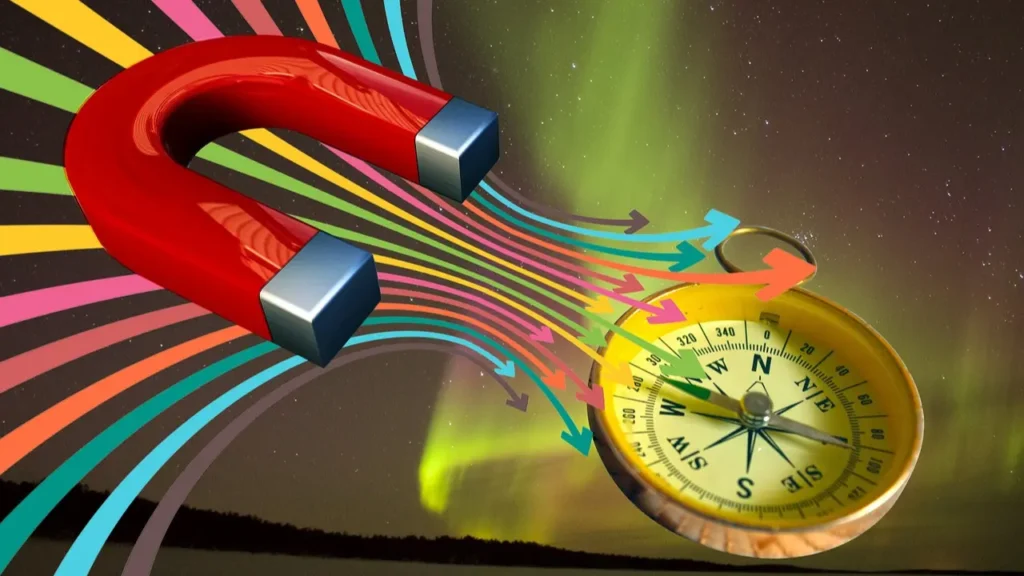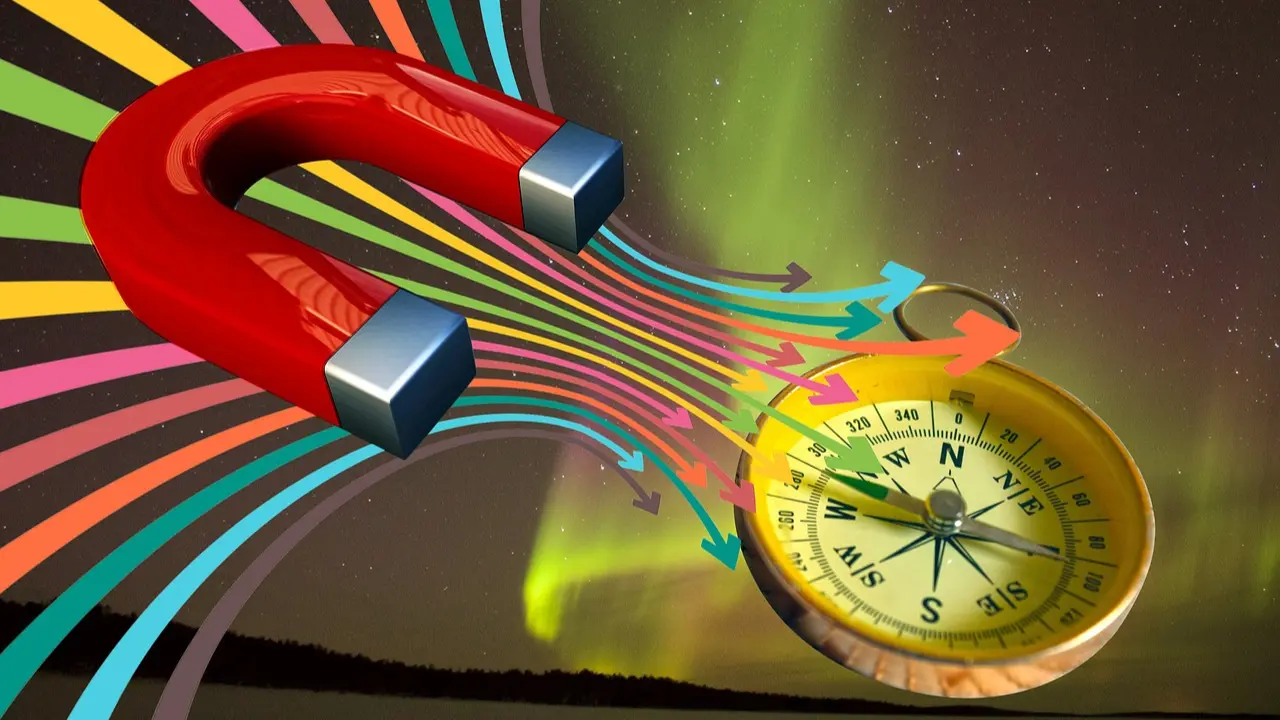Table of Contents

What is magnetism?
Magnetism, a fundamental force of nature, is the phenomenon by which materials exert attractive or repulsive forces on other materials. The magnetic behavior of materials depends on various factors such as their size, shape, strength, anisotropic character, etc. These factors play a crucial role in influencing the magnetic quantities and determining their effective applications in recording devices, spin electronics, and other fields.
Who discovered magnetism?
The discovery of magnetism is attributed to multiple individuals throughout history.
One of the earliest known discoveries of magnetism dates back to ancient Greece, where a mineral called lodestone was found to attract iron.
Another significant figure in the discovery of magnetism was William Gilbert, an English physician and physicist who conducted extensive experiments on magnets in the late 16th century. One of the key figures in the discovery and understanding of the connection between electricity and magnetism was Hans Christian Oersted.
Oersted’s discovery of the connection between electricity and magnetism was a groundbreaking moment in the history of science. The discovery of magnetism can be attributed to multiple individuals throughout history.
Why magnetism occurs?
Magnetism occurs due to the alignment of electron spins in certain materials, creating a magnetic field. Magnetism is a fascinating phenomenon that has intrigued scientists for centuries. It occurs due to the interaction between moving charges, specifically the spinning of electrons around atomic nuclei. This spinning of electrons in their orbit produces a magnetic moment, which is responsible for the magnetic effects observed.
How magnetism works?
Magnetism is an fundamental force in the realm of physics. It is well known that magnetism arises from the movement of charged particles, particularly electrons. When electrons move in a material, either due to its atomic structure or external influences like the interaction with an external magnetic field, they create tiny magnetic fields that align in a certain direction.
This alignment of magnetic fields creates a net magnetic moment, which gives rise to magnetization in the material. This magnetization can result in attractive or repulsive forces between magnets, as well as the ability to attract objects containing magnetic materials.
How does magnetism produce electricity?
Magnetism and electricity are intrinsically linked, with magnetism being able to produce electricity through various mechanisms. One of the primary ways that magnetism produces electricity is through electromagnetic induction. When a conductor, such as a wire, moves through a magnetic field or when there is a change in the magnetic field around the conductor, it creates an electric current in the conductor.
Science experiment showing magnetism
Introduction
Magnetism is a fascinating force that surrounds us, yet remains invisible to the naked eye. In this experiment, we will conduct a simple and engaging activity that will demonstrate the captivating effects of magnetism. Get ready to uncover the mysteries of magnetism with this hands-on experiment.

Materials Needed
- Bar magnet
- Small paper clips or iron nails
- Piece of thread or string
- Table or flat surface
Procedure:
Set up the Experiment:
- Place the bar magnet on a flat surface, such as a table.
- Attach a piece of thread or string to one end of the magnet.
- Ensure the magnet is stable and securely positioned.
Observe the Starting Position:
- Hold the thread or string with your fingers and let the magnet hang freely without touching anything.
- Take a moment to observe the magnet’s initial position and its orientation.
Introduce the Magnetic Force:
- Bring one small paper clip or iron nail close to the hanging magnet, without touching it.
- Observe any movement or interaction between the magnet and the metal object.
- Note down your observations.
Repel or Attract:
- Carefully move the paper clip or iron nail closer to the magnet.
- Observe if the metal object is attracted to or repelled by the magnet.
- Take note of the direction of movement and any changes in the magnet’s position.
Explore Magnetic Poles:
- Repeat the previous step with the paper clip or iron nail on the opposite side of the magnet.
- Observe any differences in attraction or repulsion compared to the previous trial.
- Take note of your observations.
Experiment with Different Objects:
- Repeat the entire procedure using various small objects, such as other magnets, metal screws, or coins.
- Observe how each object interacts with the magnet and note any patterns or differences.
Conclusion:
By conducting this experiment, you have witnessed firsthand the remarkable effects of magnetism. The interaction between the magnet and the small objects demonstrated the forces of attraction and repulsion, allowing you to explore the concept of magnetic poles. Through simple observations and experimentation, you have gained a deeper understanding of the captivating world of magnetism.
How are Integrated Circuits made?
Frequently Asked Questions
How magnetism and electricity are related?
Magnetism and electricity are two fundamental concepts in physics that are closely related to each other. According to Maxwell’s theory of electromagnetism, electricity and magnetism are two manifestations of the same fundamental underlying phenomena. Electricity and magnetism are interconnected through the concept of electromagnetism.
This concept states that electric currents produce magnetic fields, and changing magnetic fields induce electric currents. This relationship is demonstrated through various phenomena, such as electromagnetic induction and the behavior of magnetic fields around electric currents.
This deep relationship between magnetism and electricity has led to the development of many practical applications, such as electric motors, transformers, and generators.
When magnetism exists?
Magnetism, a fascinating natural phenomenon, has been studied and observed for centuries. Its existence was first documented by William Gilbert in his groundbreaking work titled “De Magnete” published in 1600. Understanding magnetism is crucial in various fields, ranging from physics and engineering to medicine and technology. For example, in physics and engineering, a deep understanding of magnetism is essential for developing and designing electrical motors, generators, and magnetic storage devices.
In the field of medicine, magnetism plays a vital role in techniques such as magnetic resonance imaging, where magnets are used to create high-resolution images of the body’s internal structures. Furthermore, the study of magnetism is also important in technology and telecommunications as it enables the development of magnetic sensors, data storage devices, and magnetic levitation systems.
When magnetic field is zero?
The concept of a zero magnetic field plays a crucial role in understanding various phenomena related to magnetism and its interaction with the surrounding environment. In the absence of an external magnetic field, the spins of electrons are randomly aligned.
This means that there is no preferred direction for the spins of electrons, leading to a net absence of magnetization in the material. However, it is important to note that even in the absence of an external magnetic field, there can still be inherent magnetization or ordering present in certain materials due to factors such as the presence of impurities or intrinsic magnetic properties
How magnetism arises in magnetic materials?
Magnetism arises in magnetic materials due to the alignment and interaction of their atomic or molecular magnetic moments. These magnetic moments occur when the electrons within the atoms or molecules have unpaired spins, creating a net magnetic moment. When these magnetic moments align in the same direction, the material exhibits magnetization and becomes magnetic. This alignment can occur naturally in certain materials, such as iron or nickel, which are inherently magnetically ordered.
In these materials, the magnetic moments within each atom align with their neighboring atoms, creating a spontaneous magnetization. Furthermore, external magnetic fields can also induce magnetization in materials that are initially non-magnetic or only weakly magnetic. This occurs when the external magnetic field causes the spins of electrons to align with or against the applied field, resulting in a net bulk magnetization
Magnetic effects of electric current?
The magnetic effects of electric current play a crucial role in various scientific and technological applications. For example, electromagnets are used in many devices and machines, such as electric motors, generators, and transformers. These devices rely on the interaction between electric currents and magnetic fields to generate motion or induce voltage. Another important application of the magnetic effects of electric current is in electromagnetic wheel brakes, which are utilized in trains and industrial vehicles. Additionally, the magnetic effects of electric current are fundamental in understanding and explaining the behavior of electromagnetic waves.
What are moving charges and magnetism?
Moving charges and magnetism are fundamental concepts in physics that are interconnected. When charges, such as electrons, move in a conducting material, they generate an electric current. This electric current creates a magnetic field around it, which can interact with other magnetic fields and objects. The interaction between moving charges and magnetic fields is described by electromagnetic theory.
The concept of moving charges refers to the movement or flow of electrically charged particles, such as electrons. Magnetism, on the other hand, refers to the properties and behavior of magnetic fields.
In the presence of a magnetic field, moving charges experience a force known as the Lorentz force. This force is perpendicular to both the velocity of the moving charges and the magnetic field. It causes the charges to move in a curved or circular path instead of changing their kinetic energy.
If you want to learn about electric charges and electrostatic then visit:
